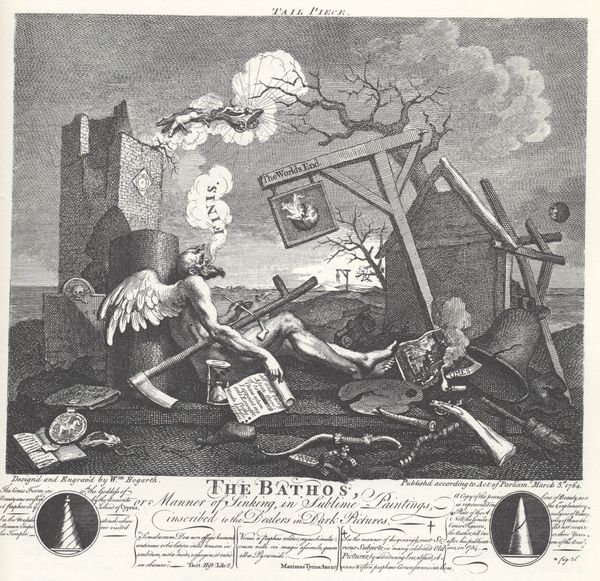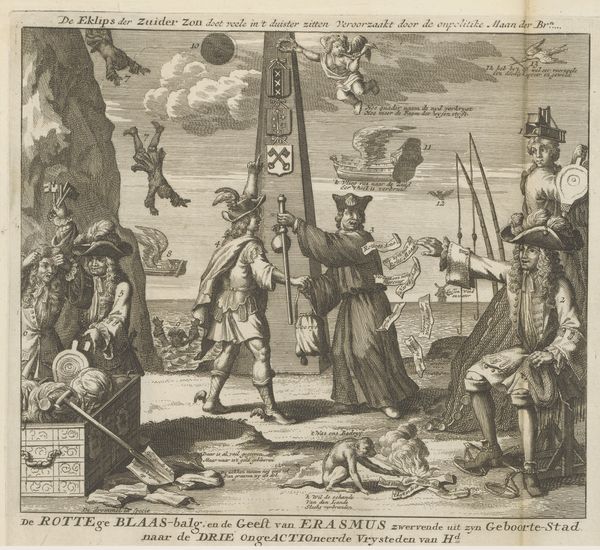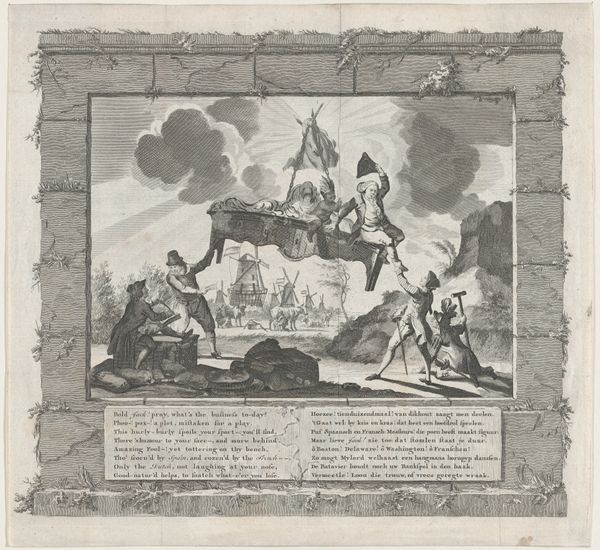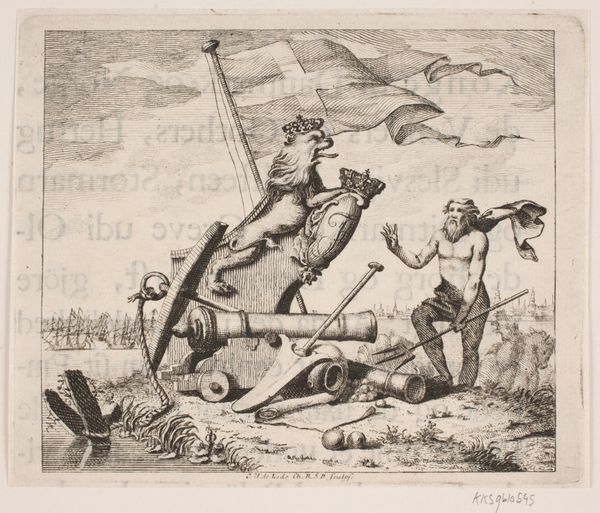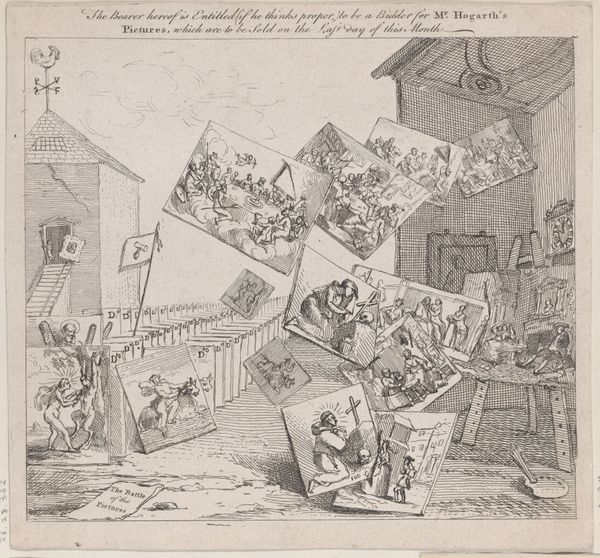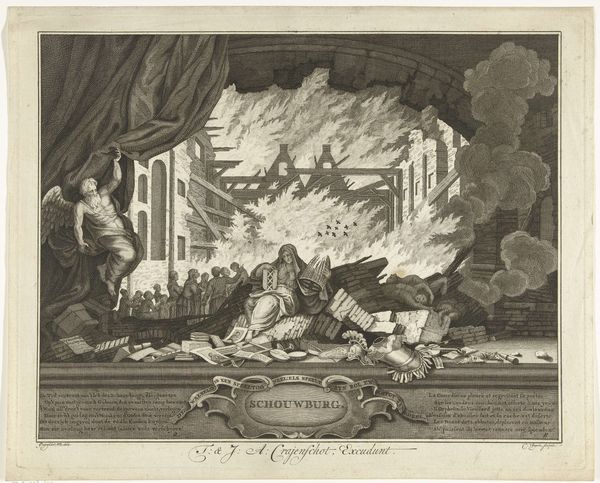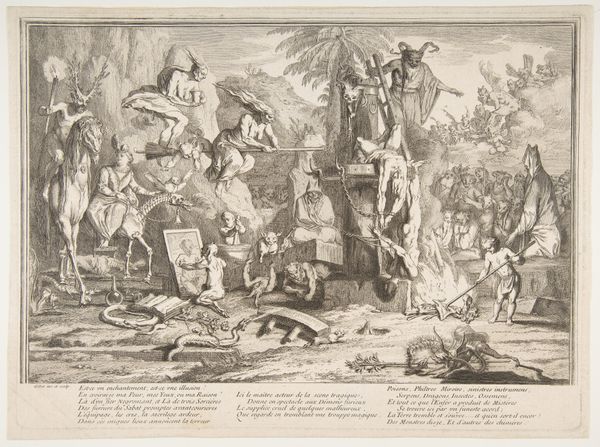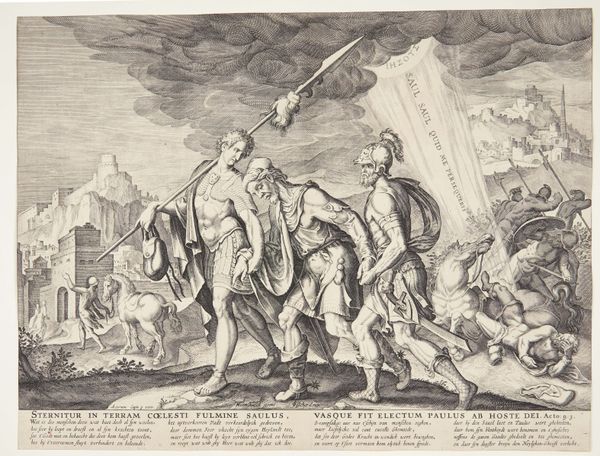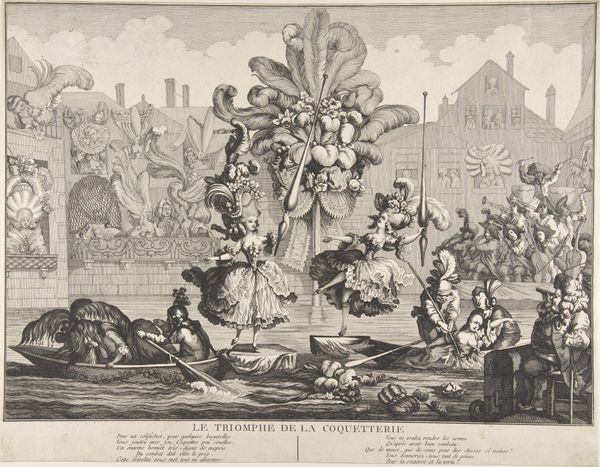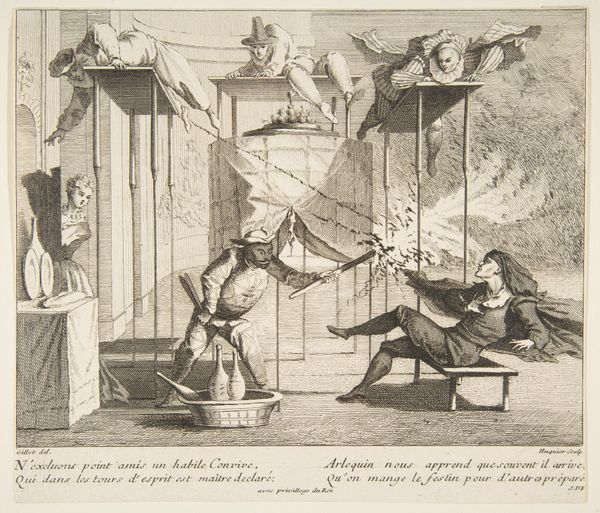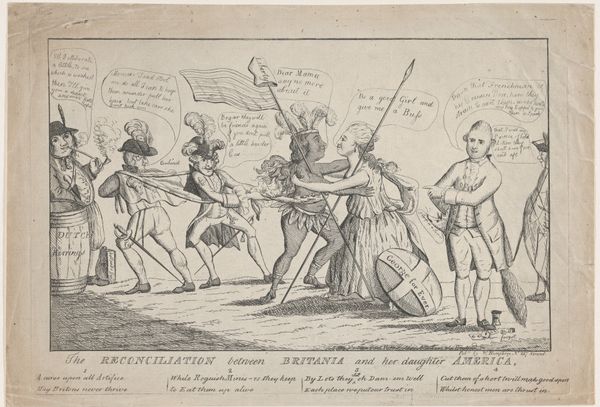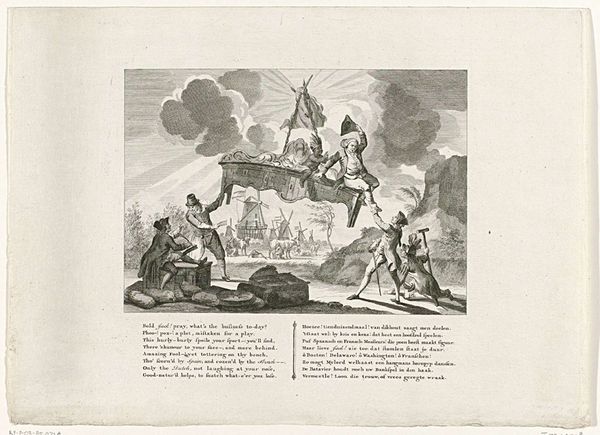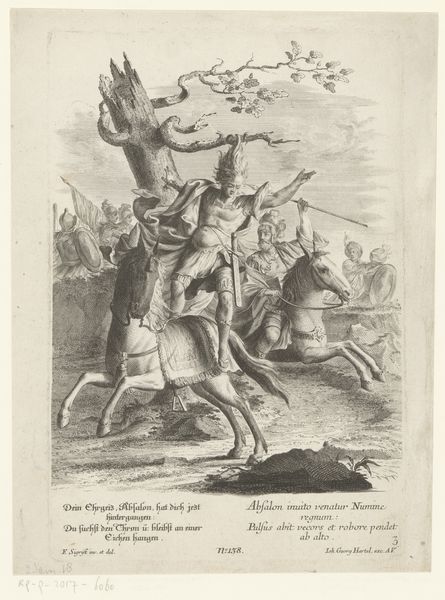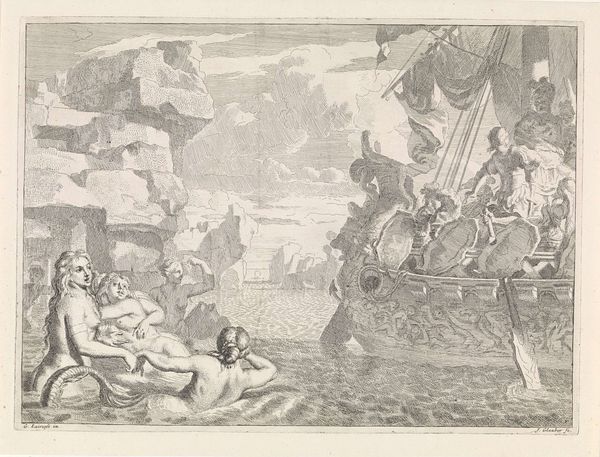
Dimensions: sheet: 12 1/2 x 13 1/8 in. (31.8 x 33.3 cm)
Copyright: Public Domain
Here is a discussion about William Hogarth’s etching, "Tailpiece, or The Bathos," created in 1764. The print presents a scene of creative and cultural collapse. Hogarth uses a visual language rich in symbolism, arranged to suggest an end to artistic endeavors. The composition is chaotic, full of imagery and dark, reflecting a sense of finality. At its center, Father Time is depicted collapsed, with broken tools scattered around him. Look at how Hogarth uses these symbols – the broken palette, the cracked hourglass, the extinguished candle – to create a sense of ruin and decay. The word "FINIS" emerges from Father Time's mouth, reinforcing the theme of completion and ending. Hogarth uses satire to critique contemporary artistic trends. The "Bathos," or sinking into absurdity, suggests a commentary on the decline of high art. Consider how Hogarth’s arrangement of images challenges notions of artistic value, and prompts a re-evaluation of cultural standards. The etching serves as a potent reminder of the transient nature of cultural achievements.
Comments
No comments
Be the first to comment and join the conversation on the ultimate creative platform.
